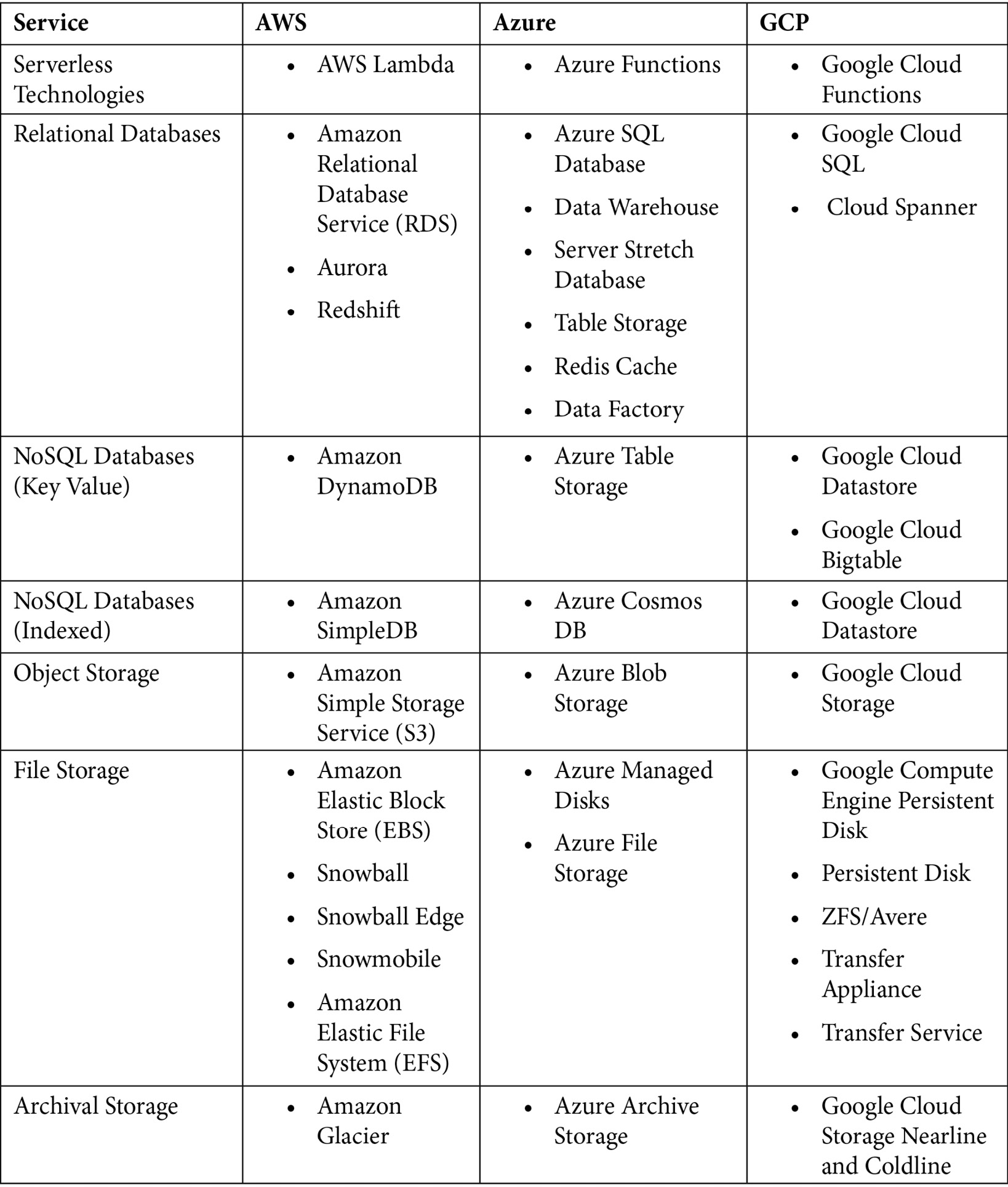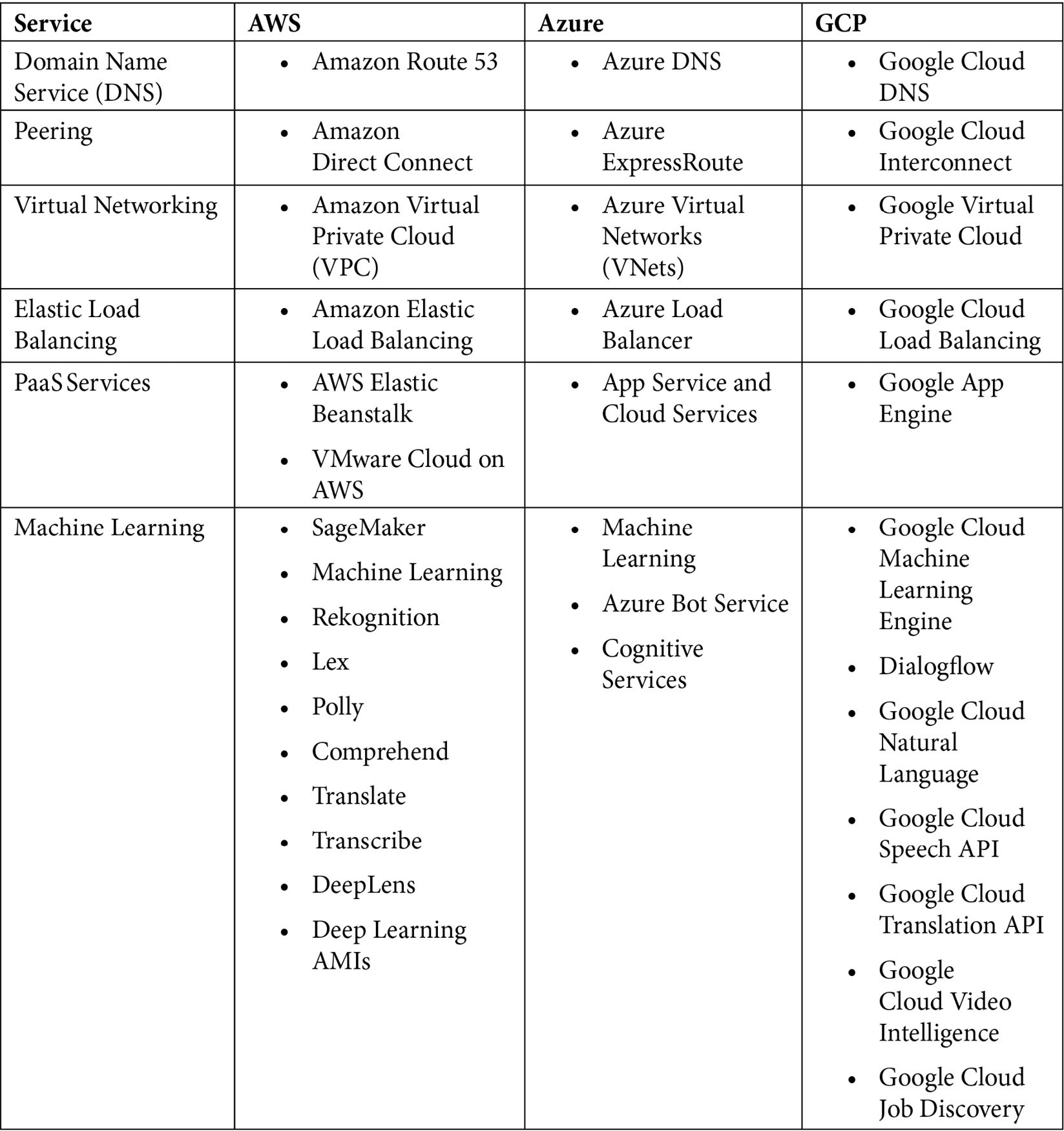Basic cloud and AWS terminology
There is a constant effort by technology companies to offer common standards for certain technologies while providing exclusive and proprietary technology that no one else offers.
An example of this can be seen in the database market. The Standard Query Language (SQL) and the ANSI-SQL standard have been around for a long time. In fact, the American National Standards Institute (ANSI) adopted SQL as the SQL-86 standard in 1986.
Since then, database vendors have continuously been supporting this standard while offering a wide variety of extensions to this standard in order to make their products stand out and to lock in customers to their technology.
The cloud is no different. Cloud providers provide the same core functionality for a wide variety of customer needs, but they all feel compelled to name these services differently, no doubt in part to try to separate themselves from the rest of the pack and make it more difficult to switch out of their environments once companies commit to using them.
As an example, every major cloud provider offers compute services. In other words, it is simple to spin up a server with any provider, but they all refer to this compute service differently:
- AWS uses EC2 instances.
- Azure uses Azure VM.
- GCP uses Google Compute Engine.
The following tables give a non-comprehensive list of the different core services offered by AWS, Azure, and GCP and the names used by each of them:

Table 1.1 – Cloud provider terminology and comparison (part 1)
These are some of the other services, including serverless technology services and database services:

Table 1.2 – Cloud provider terminology and comparison (part 2)
These are additional services:

Table 1.3 – Cloud provider terminology and comparison (part 3)
If you are confused by all the terms in the preceding tables, don't fret. We will learn about many of these services throughout the book and when to use each of them.
In the next section, we are going to learn why cloud services are becoming so popular and in particular why AWS adoption is so prevalent.



